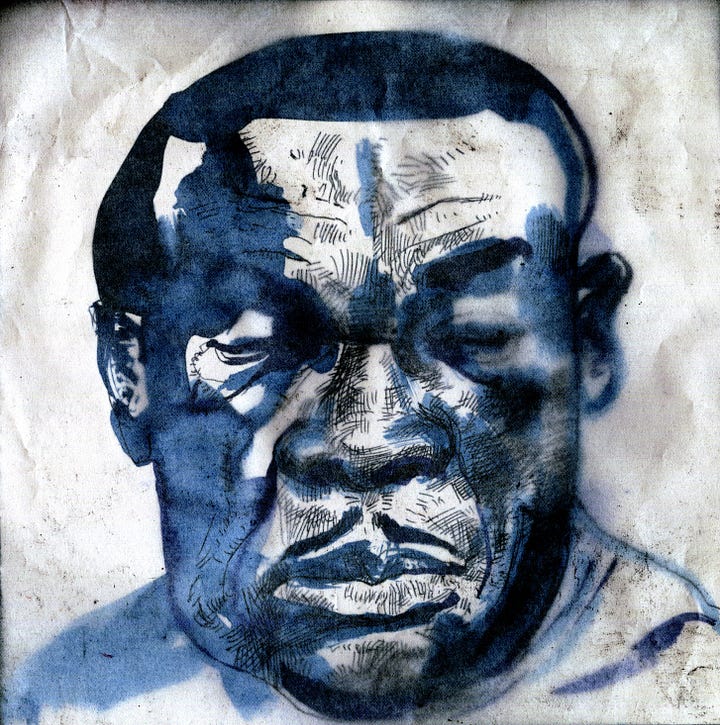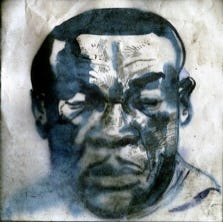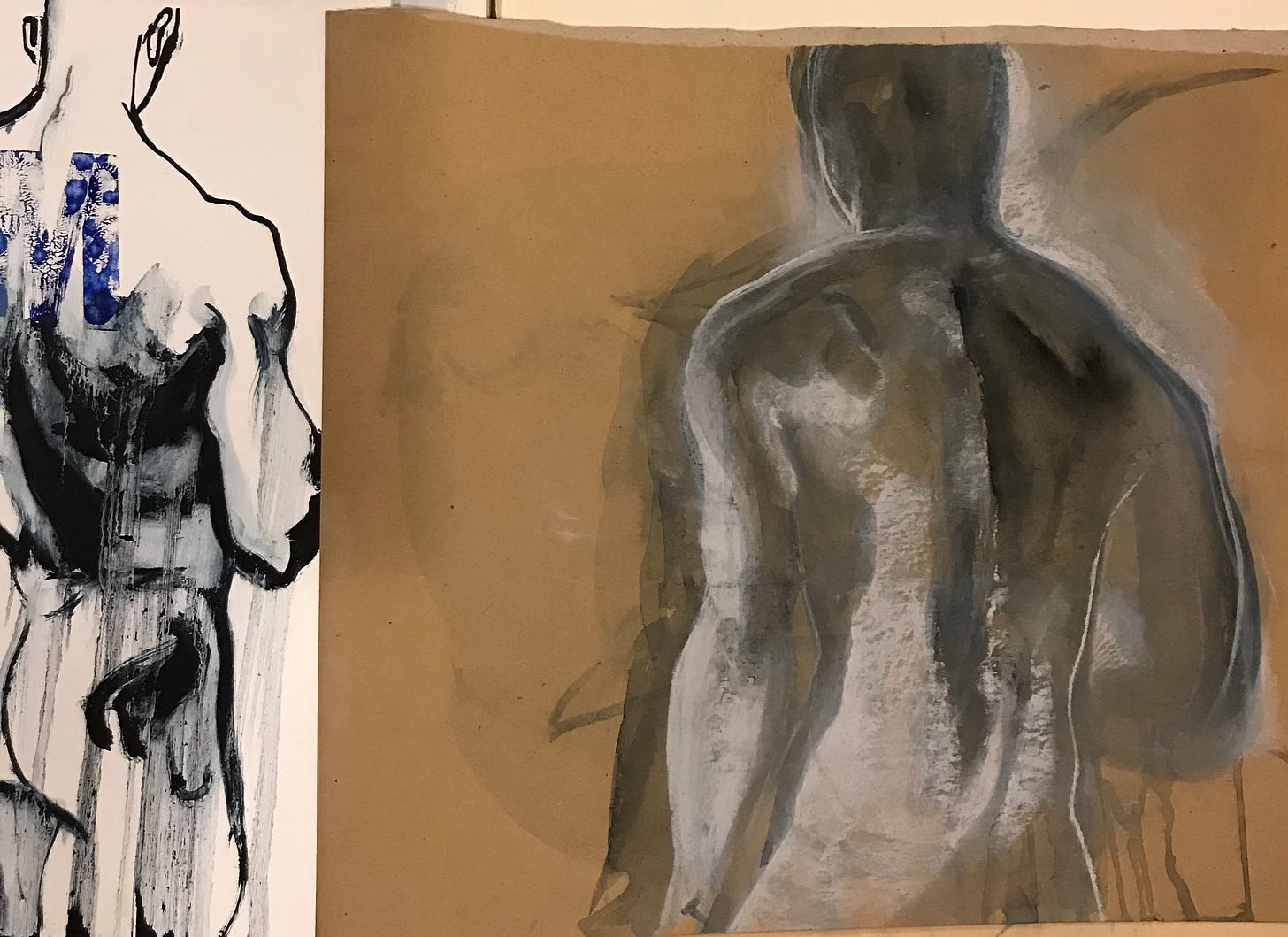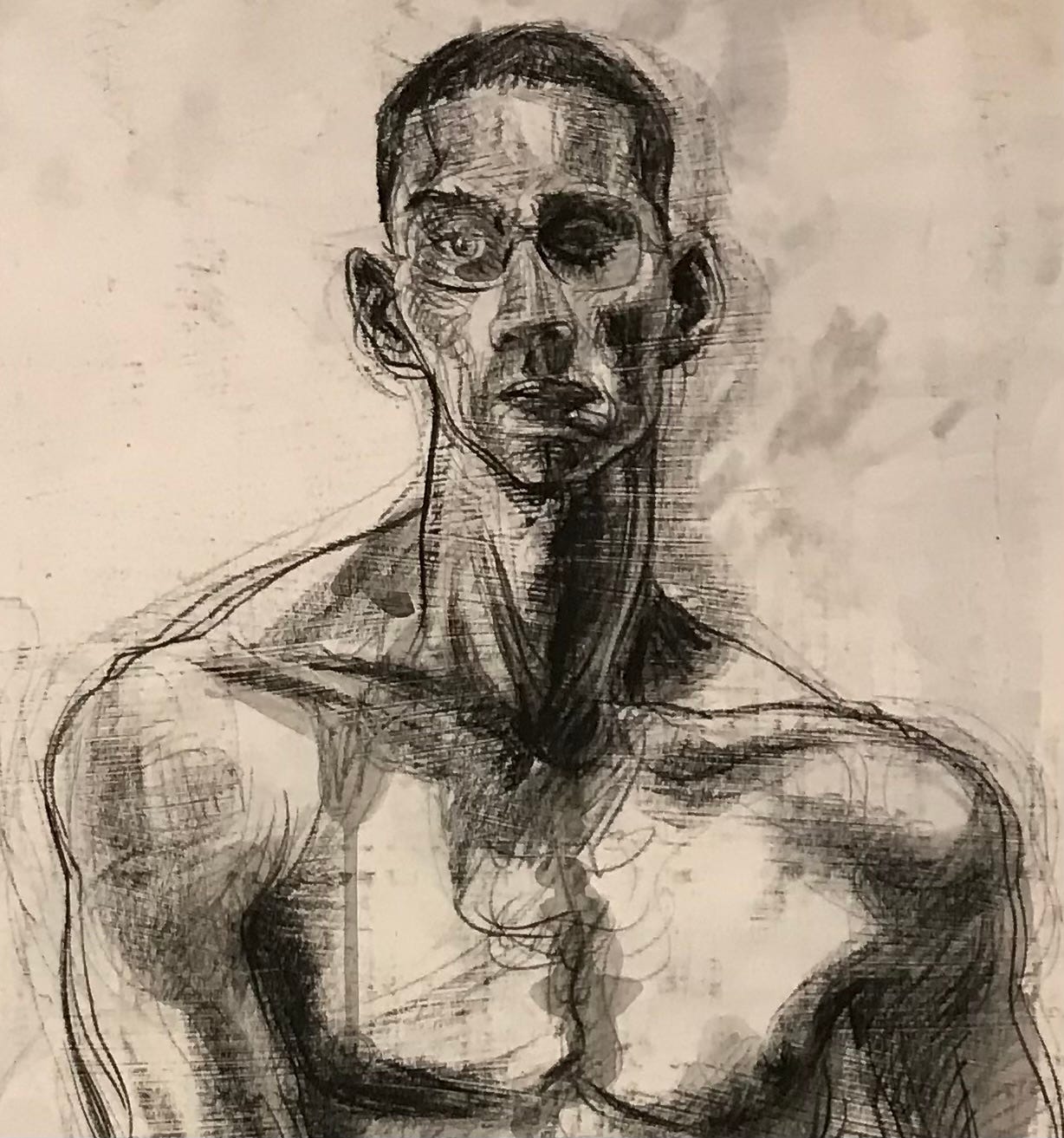Could the algo’s serving up content to my filter bubble in YouTube have a dose of irony? A video surfaced on YouTube extolling the virtues of a Drawing Atelier, ok, I watched the whole thing, but it reminded me more of a ‘how-to’ grout your bathroom tiles video than an experience in art making. At the centre of their practice, is the Reilly Method. Frank J. Reilly was a teacher at the Art Students League, he taught until his death in 1967. Atleast, they say it is his method, but their approach seems to have captured all the lifeless geometry of the method and none of the spirit of ideas built from form and light. The results are overwrought and profoundly anonymous.


On YouTube again, but this time through a specific search for the South African artist and Netherlands based Marlene Dumas. She has never worked from life and relies on photographic sources for her portraits. In a short documentary, The Image as Burden, here she shows her source material and the ink portrait of Simone de Beauvoir for the exhibition, Models. The ink portrait powerfully extends the photo source, it is not a copy/resemblance but a new rendering that is animated by the vision of Dumas. The essential aspect of the gaze extends out of the ink pool of the face.
I think there are some important questions that these two YouTube videos—Atelier and Dumas, ask. What is drawing for? Why do we draw? What role does drawing play in our culture?




Honestly, I was sold after my first experience of positive attention from a drawing in kindergarten. It took me another 17 years to wriggle out from under my own lack of self worth that drawing can’t validate, to see drawing as a way to find meaning in my life. And another 10 years to even begin to understand what I needed from drawing. We all seek belonging and validation. Community, connection and engaging with other people was another casualty of COVID and we still haven’t fully recovered. How many employees have remained remote or work in hybrid arrangements? Zoom meetings are perfect for our heads to attend meetings. There is a cost to all of this as we turn up the attention dulling screen volume and lower the embodied textures and contrasts of real life.
I believe passionately in the embodied nature of drawing, and the individuality of mark making and response to subject. Methods easily slip into conventions and that obliterates the individual. You become an assembly line worker in service of an overarching sanctioned expression. In my 30 plus years teaching in a drawing studio I have a wealth of ideas and approaches for helping my students see their drawing more clearly and to begin the process of finding their singular voice.
A drawing method or convention is different from an exercise. An effective exercise doesn’t have a right answer, but asks a good question. You don’t need to be told what to do in a drawing, you need to see what you are not looking for. If I offered certainty and handed out my 4 steps to a great drawing, my army of students gripping their knife sharp 6B pencils would no doubt work diligently to copy, measure, proportion, and tone their work to death. Better I take their hand and slam it in a car door 5 times.
There is nothing better than the last 30 minutes of a 3 hour drawing class, if we are doing it right— everyone is in a zone of intensity. They can see the drawing almost resolving and that dreaded white space is mostly gone or ordered into pools of light. Every drawing is different as their choices and viewpoint is unique despite the singular model and the shared exercise. This intense flow state is charged by a palpable energy in the studio and the embodied necessity of attention as the trio— eye, hand, and brain work together.
Drawing isn’t like learning a card trick but it sure seems to be performative on social media. Online, we can ‘search’ for anything, but we have lost the value of questioning, of the liminal, the need to stumble in the dark, grope for a way forward, we have ‘answer’ engines that offer us certainty, efficiency, familiarity, comfort, stability—-something we can grasp with both hands. But a method, a convention, an answer given without question, is not in your hands it encircles your wrists and its certainty can be a trap if you don’t leave it behind. There is so much incredible drawing that has been done by people and I look forward to September each year, as I witness the future of drawing continuing in the hands of students searching, questioning, and stumbling forward.








